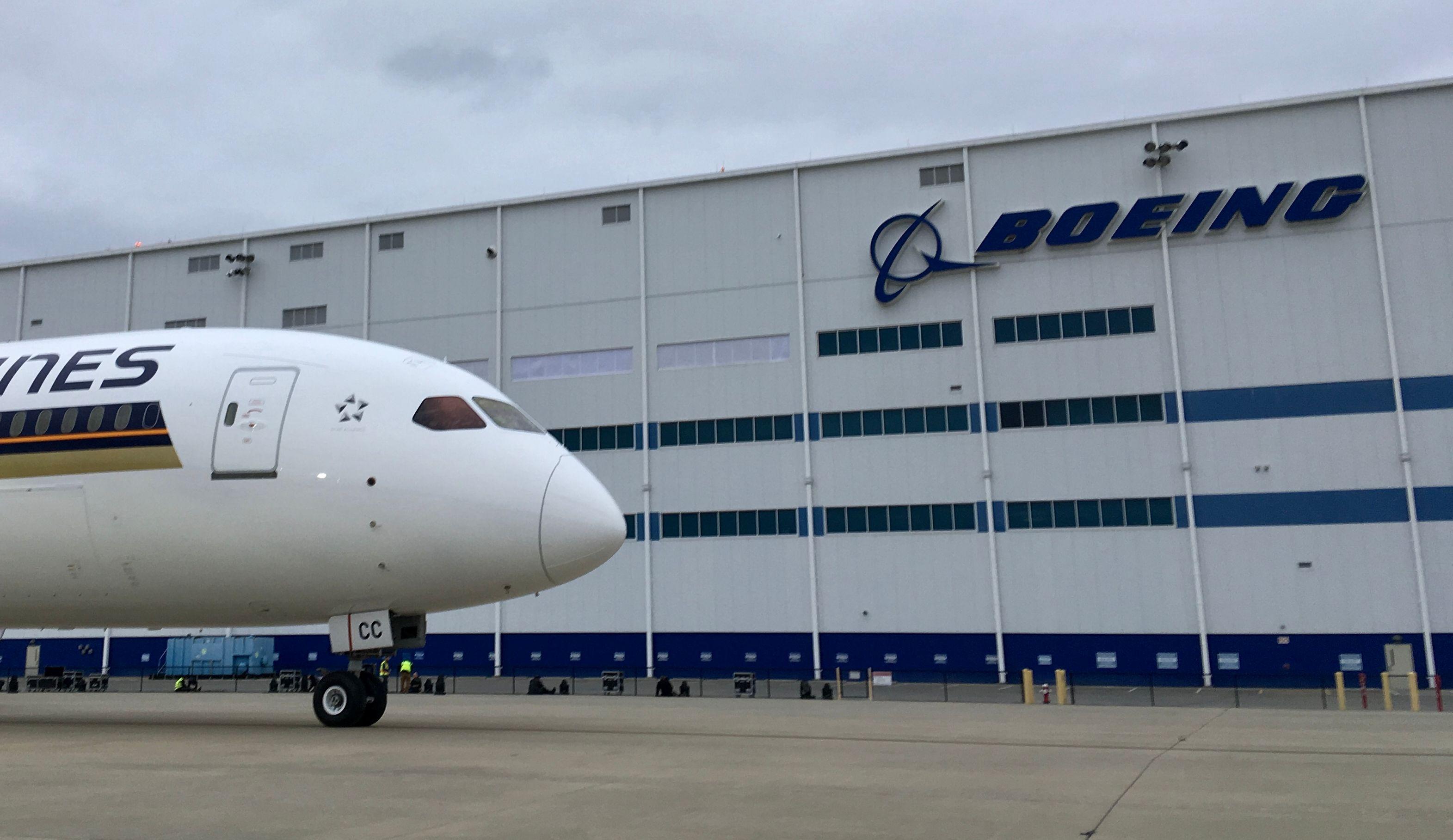Mounting 787 Issues Trigger Production Slow-down As Focus Shifts To Delivery Resumption

Boeing is shifting some Charleston, South Carolina factory employees from 787 production to inspection and rework as the push to resolve production-quality issues, including a new problem area in the forward fuselage, continues to hold up deliveries.
The change will last “a few weeks,” Boeing said July 13. The move means 787 production rates will drop to below five per month for an unspecified period "and will gradually return to that rate,” it added.
Boeing said it will use the reallocated resources to help quantify and address potential issues with the 100 undelivered 787s in its inventory. The company has been working to identify and correct production issues on the aircraft since October, inspecting multiple areas and making repairs to an unspecified number of 787s.
Boeing’s inspections have turned up problems with how parts fit together in several areas, including between fuselage barrels and around cargo doors. It recently discovered a similar issue in a previously undisclosed area—the forward pressure bulkhead.
The new focus area is part of the nose section, or Section 41 subassembly, that Spirit AeroSystems makes for the 787 program. Per Boeing's request, Spirit has been inspecting its 787 program products for months and discovered “fit and finish issues” similar to those found by Boeing on other parts of the aircraft, Spirit President and CEO Tom Gentile said in early May. It is not clear if Gentile was referring to the pressure bulkhead.
Boeing declined to say when the latest issue was discovered or how many aircraft it has been found on.
The FAA said it is “aware” of the latest issue, "discovered as part of the ongoing system-wide inspection of Boeing’s 787 shimming processes required by” the agency. "Although the issue poses no immediate threat to flight safety, Boeing has committed to fix these airplanes before resuming deliveries," the FAA added. "Based on data, the FAA will determine whether similar modifications should be made on 787s already in commercial service."
New airworthiness approvals of 787s have been on hold since May—the second delivery pause since the join problems were first identified and inspections began. The latest holdup is to address questions the FAA has about how Boeing is validating which aircraft and what areas to inspect.
Boeing’s original process defaulted to inspecting instead of using engineering data to exempt areas from manual checks. Seeking to speed up the process without compromising safety, it has proposed a more data-driven approach that one source with knowledge of the process said involves “random sampling.”
Boeing declined to provide details on its methodology. The FAA and Boeing continue to discuss the new process.
Meanwhile, Boeing is inspecting what it knows needs review and, where necessary, making repairs.
The problems mostly involve connections, or joins, between major structural sections, such as fuselage barrels. In some cases, small imperfections or wrinkles along composite fuselage interior skin where subassemblies join leave non-conforming final assemblies.
In other cases shims meant to fill gaps in joins do not meet specifications—they could be too small or too large. Neither issue by itself presents an immediate safety-of-flight risk, but they can leave aircraft technically unairworthy and not eligible for delivery.
The company declines to say how many aircraft have required rework since inspections began late last year, or what the re-work packages entail. It also declines to project when deliveries, which have totaled just 14 in 2021, may resume.
Boeing will not project a timeline for the FAA review or delivery resumption. "We will continue to take the necessary time to ensure Boeing airplanes meet the highest quality prior to delivery,” the company said.





